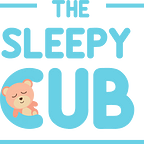Sleep Training A Preschooler: 4 Tips That Work
Are you an exhausted parent of a preschooler who has difficulty falling asleep without your assistance?
Is your preschooler waking up in the middle of the night, refusing to go back to sleep unless she is in bed snuggled up next to you?
Sleep-deprived, you’re wondering:
Did I miss the train on sleep training?
I’m here to tell you that you can sleep train a preschooler just as successfully as you can a baby. Contrary to what you may have heard, there’s no “magical window” to sleep train a child that closes after they’re six months old.
Here are some tips for sleep training a preschooler so you can both get the rest you need.
Tips for sleep training a preschooler
Time it right
All sleep experts agree:
The ideal bedtime for children up to the age of 10 is between 7:30 pm and 8:30 pm.
But how the heck do you figure out the best bedtime for your child?
That’s simple!
Notice the time she falls asleep each night. Once you have this info, start your bedtime routine 45 minutes before bedtime. For instance, if your child usually falls asleep at 8 pm, start your bedtime routine at 7:15 pm.
If you think that you can start your bedtime routine at 6:00 pm so that she can be in bed earlier, it’ll be pointless. She won’t have enough internal sleep pressure to go to sleep that early.
Make her room more enticing
If your preschooler prefers your bed over hers, here’s an idea:
Why not make her room more enticing for her to want to sleep in there?
For instance, let her pick things for her room, like the sheets for the bed, pillowcases, or even toys.
Don’t look at this as you’re bribing your child. You’re just rewarding her for making positive changes. On top of that, she’ll feel more involved in the process.
Communicate and practice
Another major step towards sleep training a preschooler is talking to her about the change that’s about to happen.
Tell her something like, “I’m so proud you’re becoming a big girl. It’s time for a new exciting new step.”
Tell her what’s going to happen. She’ll be sleeping in her own room, in her own bed, and mom and dad will be sleeping in another, but you’ll be so close to one another.
You can even do some practicing during the daytime so that she knows what to expect when bedtime comes. For instance, rehearse your bedtime routine, along with the sleep training of your choosing.
Doing so will reduce the anxiety you both may be feeling when the day arrives for her to sleep on her own.
One effective strategy for making this change more easily bearable for your child is by adding a fun element. You can put on your pajamas and have your child put you to bed, or maybe her favorite stuffed animal.
The goal? She’ll learn to associate bedtime with positive feelings.
Praise her like she just won an Academy Award
Positive enforcement is one method that works well for children because it encourages the desired behavior instead of punishing the undesired behavior.
Sounds good, right?
The goal of positive enforcement is to replace traditional punishments with a system that focuses on rewards and encouragement while teaching the child a skill or a moral lesson.
For example, have your child lie in her bed and say, “Look at you in your bed. You’re such a big girl now, and I’m so proud of you.”
Celebrate her wins. And it doesn’t have to be a big win. Even if she manages to sleep in her bed for a few hours, look at it as one step closer to independent sleep.
Don’t hold back on hugs and kisses.
If she comes to your room only once, instead of three times as she used to, overwhelm her with affection.
You can even reward her for sleeping in her own bed. Sticker charts are an effective reward system for toddlers and preschoolers.
What to do when your preschooler comes in at night
If your preschooler cries at bedtime when you leave her alone, offer verbal reassurance, telling her that you’re just across the hall.
If she leaves her bed and comes to your room, put her back to bed. Don’t argue but keep your voice reassuring.
Escort her back to her room, and say, “It’s time to go to sleep. I love you. Shhh…” You may have to do this several times the first day, even for the first few days. But you know what they say, Patience is a virtue.
Final word
If you need help with sleep training a preschooler, we have the program just for you. With our Toddler Sleep Training Program, you’ll get everything you need to effectively sleep train your preschooler with ease.
You’ll get:
- Complete DIY sleep training online course, including 6 video modules and printable worksheets
- Sample sleep schedule
- Naptime tips
- Tools for when your baby is sick, time changes, regressions, etc.
- Email support for 30 days
- Access to the Healthy Sleep Happy Mamas Facebook Support group for 90 days.
Originally published at https://thesleepycub.us.
